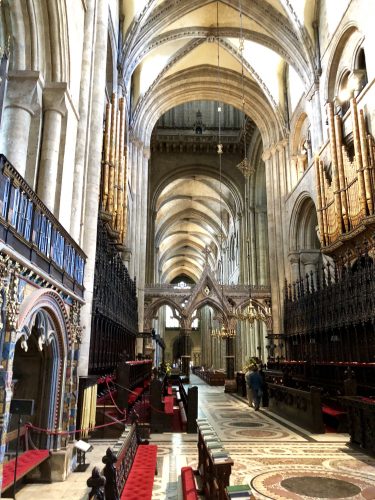Sunday, July 8th
Afternoon
The first phase of my DukeEngage experience ended on Saturday the 6th with me departing the States. Three planes, 4 overpriced airport burgers, 24 hours and a missing suitcase later I arrived in Durham, UK. The travel went as smooth as I could have hoped and having been blessed with the talent of sleeping wherever and whenever I want, I was ready to explore the city.

With its cobblestone roads and the seagull filled square, Durham is exactly the charming European city I imagined. We wandered through the streets and strolled along the river for a couple hours before we ended up at Bells Fish and Chips for dinner. As we sat in the square enjoying our obligatory Fish n Chips, we saw an artist flinging paint onto his painting of the square. It turns out, John is a pretty established artist in North East England and he invited a few of us to fling some paint in exchange for some chips.
(http://www.suncage.co.uk/Site/Suncage.html)

Tuesday, July 10th
We spend Tuesday touring the Cathedral and the neighboring castle. Through Durham Cathedral’s gorgeous architecture and rich history, we were able to get a glimpse into the political/religious conflicts England went through. For hundreds of years, countless kings, armies and bishops came and went; many times, the cathedral was sacked and repurposed, but it never sat vacant for long and to this day it is used as a place for worship.
The tour not only brought me additional admiration for this great structure, but also a healthy perspective on the insignificance of our lives.


The Durham Castle was employed by the Normans to control North East England after their conquests. Now it houses almost 100 Durham University students during the year. It really does put our Duke campus housing to shame, doesn’t it?

Wednesdays, July 11th
We travelled out to Killhope for the other half of Durham’s history, mining. We put on knee-high boots and went for a quick walk in the abandoned lead mine. After making it out of the narrow and often very low-ceilinged tunnels, we were treated to a view of (what I imagined to be) a typical British countryside. We were then told about the life of those who worked here. Kids starting at age 8 would work right outside of the mine, picking out pieces of lead from the ores their fathers dug out. The miners were paid only once per year and almost always had to go into debt to pay for their yearly expenses. The miners worked (and often lived) in incredibly difficult conditions with little safety equipment; as they were in debt to the company, they were often unable to achieve better pay or working conditions. Their stories might have ended with the collapse of the mining industry of North East England, but the stories of underpaid workers still go on all around the world. As one of the nonprofit workers said, “it is expensive to be poor”.


